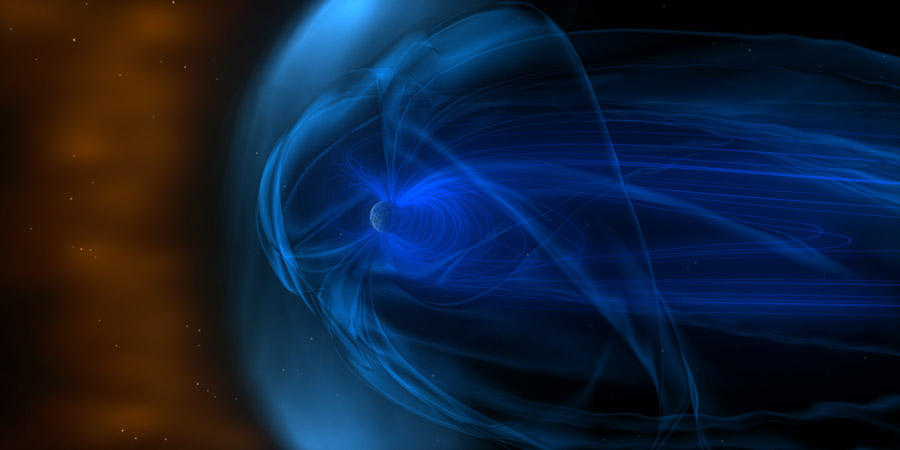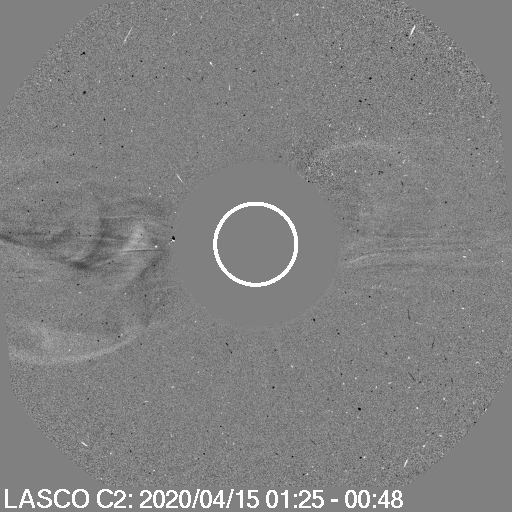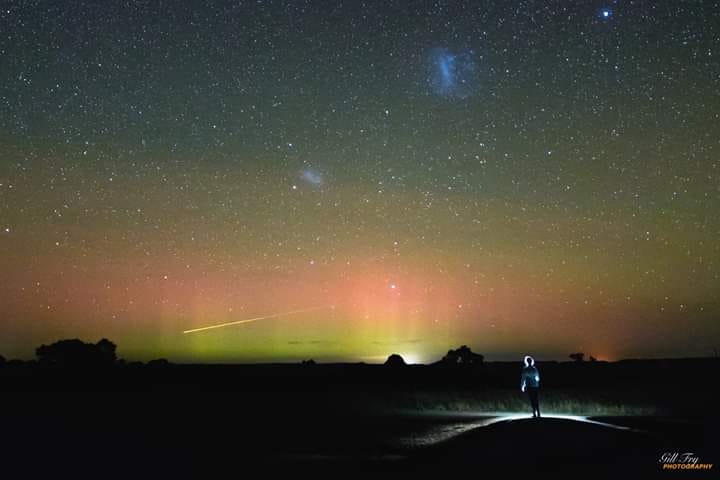G1 geomagnetic storm, Coronal hole faces Earth
Tuesday, 21 April 2020 14:06 UTC

Some unexpected action yesterday! The minor G1 geomagnetic storm threshold was reached on two occasions yesterday (10:44 UTC and 14:18 UTC) and a coronal hole faced our planet! Where did this mysterious geomagnetic storm come from and what can we expect from the earth-facing coronal hole? Keep on reading to find out.
Minor G1 geomagnetic storm
Indeed we reached storm conditions yesterday! This was the first geomagnetic storm since February and it was a welcome break to a long period of space weather silence. But what caused this sudden and unexpected geomagnetic storm? We believe it has to do with a coronal mass ejection that slipped under the radar.
Yesterday (20 April) around 1:30 UTC there was a very distinctive little jump in all of the solar wind and interplanetary magnetic field values as measured by DSCOVR at the Sun-Earth L1 point. This was a small shock in the solar wind ahead of what we now know very likely was a coronal mass ejection. While rare, coronal hole solar wind streams can also produce shocks in the solar wind but what followed can only be attributed to an interplanetary coronal mass ejection. Around 7:30 UTC the total strength of the interplanetary magnetic field jumped to 14nT and stayed there for pretty much the entire day. This stable magnetic field strength was combined with a strong and stable southward Bz component near -14nT for about three hours and that quickly propelled us to minor G1 geomagnetic storm conditions. Around 13:30 UTC the Bz direction of the interplanetary magnetic field turned northwards and stayed like that for the remainder of the UTC day. These stable magnetic properties are a clue that Earth passed trough the core of a coronal mass ejection: a magnetic flux rope. Indeed this wasn't just a glancing blow, it was a cloud of solar plasma that hit us straight on.
Digging around SOHO and STEREO coronagraph imagery from the past few days we have to come to the conclusion there is only one plasma cloud that could have hit us and that is this coronal mass ejection from April 15:

Image: The coronal mass ejection that likely impacted Earth on 20 April 2020 as seen by SOHO/LASCO C2 on 15 April 2020.
Sky watchers in the northern United States, Canada and even down under in New Zealand and Australia were in luck! The timing of this coronal mass ejection impact was just right for them and many people saw some gorgeous Aurora Borealis or Aurora Australis sometimes right in front of their own homes! Just take a look at this stunning image captured from Australia:

Image: Aurora Australis captured by Gill Fry in Victoria, Australia on 20 April 2020.
Coronal hole faces Earth
Our coronal hole detector kicked into action yesterday and alerted us on Twitter and our Android/iOS app that we have a coronal hole facing our planet. A quick look at SDO reveals a rather poorly defined coronal hole near the center of the solar disk that likely wont give us much action but a very clear southern polar coronal hole. It is doubtful if the opening from the southern polar coronal hole stretches far enough northwards for it to be able to influence our planet however. We have to wait about 2 days to see if we will see some enhanced solar wind at our planet but if the stream does arrive this will only give high latitude sky watchers a chance to catch aurora. Geomagnetic storming is unlikely.
A transequatorial coronal hole is facing Earth. Enhanced solar wind could arrive in ~3 days - Follow live on https://t.co/bsXLidnzGh pic.twitter.com/T8t0sKyizL
— SpaceWeatherLive (@_SpaceWeather_) April 20, 2020
Thank you for reading this article! Did you have any trouble with the technical terms used in this article? Our help section is the place to be where you can find in-depth articles, a FAQ and a list with common abbreviations. Still puzzled? Just post on our forum where we will help you the best we can!
Latest news
Latest forum messages
Support SpaceWeatherLive.com!
A lot of people come to SpaceWeatherLive to follow the Sun's activity or if there is aurora to be seen, but with more traffic comes higher server costs. Consider a donation if you enjoy SpaceWeatherLive so we can keep the website online!

Space weather facts
| Last X-flare | 2024/03/28 | X1.1 |
| Last M-flare | 2024/04/30 | M1.6 |
| Last geomagnetic storm | 2024/04/26 | Kp5+ (G1) |
| Spotless days | |
|---|---|
| Last spotless day | 2022/06/08 |
| Monthly mean Sunspot Number | |
|---|---|
| March 2024 | 104.9 -19.8 |
| Last 30 days | 139.9 +35.1 |


